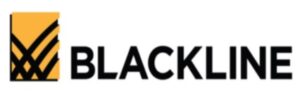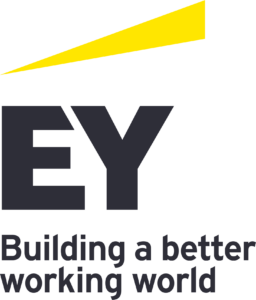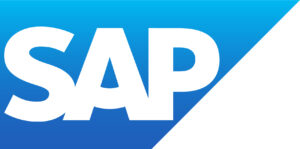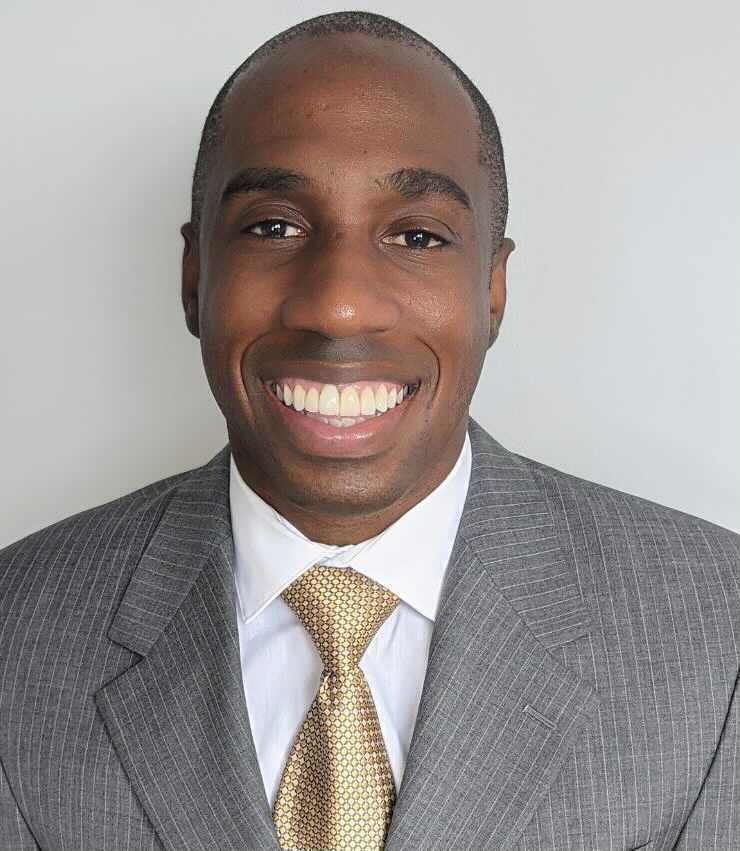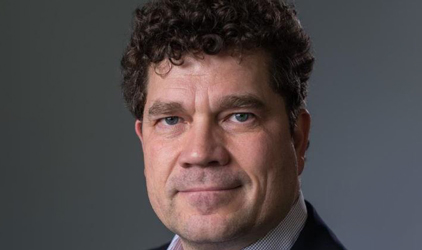Financial Close Transformation
Meet the Experts
Key Takeaways
⇨ The financial close is often cited as a major pain point consistently by SAP organizations, putting pressure on CFOs to streamline this critical business process.
⇨ 88% of respondents with a negative view of current organizational financial close processes and technologies, also said these systems were reliant on manual methods and legacy tools.
⇨ Survey respondents with a positive view of organization’s current financial close processes and technologies are more likely to run SAP S4/HANA.
Ogo Nwanyanwu (00:02):
Hi, everyone. Uh, testing, testing. Just wanna make sure everyone can hear me. Welcome, uh, we’re going to get started shortly. Just waiting for a few more people to trickle in. Uh, very excited to share, uh, this information with you and share our research on financial close transformation. Uh, but we’re just going to give a chance for people to trickle in. Uh, I heard there were some, uh, challenges with AWS this morning, so maybe people are just now getting online and trying to, uh, find their way to the webinar. So I wanna give some time for people to join. Okay. Going to get started in just a few moments.
(01:23):
All right. Well, thank you for joining today, uh, Halel, and welcome to today’s webinar, discussing Financial Close Transformation Research, hosted by S A P Insider and presented by BlackLine Clear salting EY and S A P. I’m Oga Wu, research Director for s a p Insider, and I will be your analyst for today. We have just a few announcements before we begin. Uh, this webinar is designed to be interactive and you, between you and the presenters. Uh, after the presentation, we will host our q and a and we invite you to submit your questions using the q and a box located on your control panel. We’ll try our best to get to as many questions as we can within our scheduled time. A copy of today’s presentation will be available for download and email following today’s session now to our presentation, SAP Insider is the largest and fastest growing membership group worldwide, with more than 600,000 members across 205 countries. As far as our transformation, uh, financial close transformation research, uh, this is our webinar agenda for today. Uh, we’re going to start with an overview and a survey snapshot, followed by, uh, discussing the S SAP Insider DART methodology for this research. We’ll move to recommendations and end with a live q and a.
(02:51):
Now on to the research overview,
(02:57):
Our research on finance, our research is focused on finance and lines of business decision makers from enterprise companies on a global basis. We surveyed organizations that are part of the SAP community, and were interested in the financial close record to report and finance transformation topics. The objectives of the research, uh, was to better understand how organizations are evaluating plans for financial close transformation within the context of current or future digital transformation efforts, what challenges they’re facing, uh, what benefits they aim to achieve. We examine the drivers actions, requirements, and technologies on which they are focused as a part of financial close transformation. Uh, as you can see, uh, we had 124 respondents to the survey, uh, acro cut across different job functions, primarily finance, accounting, and tax. Uh, in terms of the sector, the leading sector that our respondents, uh, uh, came from, uh, or represented were industrial and public services, healthcare, as well as software and technology. In terms of, uh, region of operation, uh, most were, uh, based out of North America
(04:04):
Next to our survey snapshot. So, in terms of, uh, in terms of with regards to this research, it was important to first, uh, understand the need for financial close transformation. So we asked s a p insider organizations whether their financial close processes and technologies were too reliant on manual methods, and we had 61% strongly agree, uh, or agree with that statement. We had 15%, uh, neither agree nor disagree with that statement, and we had 23% strongly disagree or disagree with that statement. Um, in terms of, with, with this insight in mind, it’s no wonder that only a third of survey respondents have a positive view of their organization’s financial close processes, processes, and technologies. So if we look to the next, uh, sentiment, right? When we talk about sentiment of, uh, how our organizations and how our respondents are thinking about financial close, uh, and r r processes and technologies, uh, it was pretty evenly distributed.
(05:06):
Uh, we had 33% with a positive view. We had 36% with a neutral view. We had, uh, 31% with a negative view. And so, again, uh, it was evenly distributed in terms of, uh, positive, neutral, negative in terms of how, uh, organizations are respondents, uh, their sediment of their companies, current financial close, uh, processes and technologies reflected were reflected in the survey. Uh, this is important because, uh, throughout the survey, what we do is to better understand, uh, again, the opportunities, the challenges that our, uh, respondent organizations are facing. We double clicked into those with a po po positive view and those with a negative view. And so throughout the survey, you’ll, uh, and research, you’ll be able to see the insights generated, uh, from this research and from this, uh, drill down.
(05:58):
So in terms of, uh, when we talk about, uh, financial closed processes and technologies and organizations that are too reliant on manual methods and legacy tools, you see that overall, uh, 61% of our audience agreed when we, uh, pivot to those, uh, respondents that had a negative view of their financial closed processes and technologies, uh, we see that that increase to tw uh, 88%. Um, again, among, uh, those respondents expressing a negative view, you could see that there’s a jump in terms of how they think about, uh, their, their proc, their, uh, financial closed processes and technologies. And really it’s driven by, uh, their organizations being too reliant on manual methods and legacy tools.
(06:44):
So, in terms of, uh, these respondents, both those with positive views and negative views, uh, respondents with a negative view believe their organizations are falling behind in their approach to reduce manual financial close methods and replace legacy tools. It makes sense that these respondents would prioritize the need to eliminate extensive manual, uh, interventions and improve the efficiency of the close as a top objective of financial close transformation. Uh, demand for greater closing efficiency aligns with best practices, recommendations from S A P and industry experts when coupled with general frustration and negative sentiment of survey respondents. This is a wake up call, uh, for organizations and senior management, especially to invest in technology and enable financial close automation.
(07:31):
But if the case for financial close transformation is clear, what’s preventing organizations from, from moving forward? Uh, it starts with budget constraints. Uh, this was the top overall barrier, uh, for financial close transformation in our research. And you see, with respondents that had a negative view of their organiz organization’s closed processes, it was much higher. And, uh, again, I, what I did is I shared, uh, some insider perspective, uh, with regards to this topic. Uh, you see on the right, uh, finance manager from a global industrial manufacturer in North America talked about how budget issues were impacting his ability to, uh, bring in resources and to improve financial close processes. And so you see that in real time and, and, and through the insights of our Audi of our community as to how budget constraints are impacting the ability of organizations to, uh, uh, improve their financial close processes and technologies.
(08:26):
So, and what we saw in that last slide is that organizations with a positive view of, uh, of their organization’s financial close processes, uh, faced fewer barriers, right? Uh, they were less concerned about, uh, or had less challenges around, uh, disparate systems, had less challenges around, uh, budget, had less challenges around data, and with fewer barriers. Uh, again, these respondents organizations with a positive view were better positioned to implement, uh, technologies and solutions that help them, uh, improve their financial close transformation. And we see this across the board, uh, starting with, uh, s a p, uh, intercompany Governance by BlackLine, uh, by 4 0 1 margin, uh, organizations, uh, and respondents with a positive view, uh, were prioritizing and adopting this solution, uh, relative to those that were challenged with the negative view of their financial close processes. And, and again, in, in going over this research, you’ll see that this is a trend throughout the survey and throughout the research where, uh, organizations that, uh, and respondents that really, uh, felt, uh, posi had positive sentiment towards their processes, uh, really were empowered and impacted by adoption of technology, uh, to do so.
(09:42):
In terms of our executive summary for this research, uh, financial close transformation can help organizations overcome challenges with manual financial close processes, such as inaccurate data missed deadlines, and a lack of visibility into the closed processes. Uh, we see that 54% of survey respondents said, moving to S A P S Rohan to consolidate financial activities and modernize, uh, finance and accounting functions was the top driver, uh, impacting financial close transformation strategies. Uh, this was followed by, in, uh, insufficient automation leading to manual work and manual processes, uh, that was represented by 33% of survey respondents. Uh, s a p Insider organizations plan to address their core drivers by taking actions that include, uh, improving the efficiency of the financial close, our members, our member community identified in terms of challenges. Our member community identified consolidation, intercompany accounting, uh, management, internal reporting as financial close activities that we’re experiencing the most significant challenges, uh, as well as transaction reconciliation. Again, and this is potentially why we see that, uh, respondents with the positive view, uh, were adopting, uh, technologies and, and s a p, uh, solution, uh, extensions such as, uh, s A P intercompany Governance by BlackLine.
(11:07):
So in terms of, uh, the required actions for, uh, you know, for this research, uh, from our executive summary standpoint, uh, prioritizing financial close efficiency in parallel with organizational wide finance transformation efforts, uh, to move to s a s four ha, uh, this was the first, uh, recommendation. Uh, in terms of this research. Uh, many companies today have multiple systems over 25 e r p instances, instances according to this research. Um, and this stores various types of data from transactional to master data. This can lead to like duplication and in inconsistency across disparate systems. And a move to SAPs for hana, uh, and leveraging si i n can, uh, help address this in terms of the number two required action, uh, prioritizing financial close automation to redeploy, uh, teams to higher value activities. Uh, increased automation to replace manual tasks will allow finance and accounting teams to focus on other strategic opportunities.
(12:05):
Uh, historically, financial close has been of man manual process, uh, forcing, uh, team members to work long hours and to ensure all tasks are completed accurately. Uh, so recent technology advances have made it possible to really automate many of these tasks and really streamline the financial close process. Uh, we also want to see, uh, recommend that, uh, or organizations explore opportunities to re-engineer repetitive tasks with intelligent technologies. Uh, we see that increased, uh, no. We see that financial close transformation goes beyond automating routine manual tasks. It looks to re-engineer financial processes, including how data’s collected, reviewed, and reported. Uh, by doing this, organizations can unlock new efficiencies and business insights, uh, by leveraging intelligent technologies such as R P A, uh, machine learning, artificial intelligence organizations can enhance capabilities a, across the financial close process. Finally, we have determining needs for change management and process standardization to support financial close transformation.
(13:10):
Implementing a new financial close solution is a significant task for any organization. So it’s crucial to communicate goals and objectives of the transformation across teams. Uh, and this can mean mapping out each step of the process and understanding who’s responsible for each task. Now, onto our DART methodology for this research, DART methodology start, uh, stands for drivers’ actions, requirements and technologies drivers. These are the macro level events that are impacting an organization. They can be both external and internal, and required implementation of strategic plans, people, processes, and systems actions. These are the strategies that companies can implement to address the drivers, uh, that impact, uh, business and people. Uh, they are the integration of people and processes and technology requirements. Uh, these are the business and process level requirements, uh, to support the strategies technologies. Uh, these are the technology and system related requirements that enable business requirements and support the overall strategies that the company is taking.
(14:22):
We’ll start with drivers. So in terms of top drivers that are impacting, uh, organizations in their approach to financial close transformation, uh, this research saw a majority of respondents, uh, identify the move to SAP S for HANA as to consolidate financial activities and modernize f and a functions, uh, as the top driver. Uh, again, financial closes often cited as a major pain point, uh, within our community, within the s uh, consistently by s SAP Insider organizations. And this puts a pressure on executives, specifically CFOs, to streamline, uh, this critical business process. Uh, this helps, uh, provide context for s SAP S for hana, uh, and the move to SAP for S four hana as, uh, identified as a top driver for, uh, the approach to financial close transformation. Uh, next we have insufficient automation leading to manual work and manual processes. Again, earlier in the, uh, in, in the survey and presentation, we saw that, uh, 61% of survey respondents, uh, thought their organizations were too reliant on manual, uh, processes and, and legacy technologies. Uh, we saw that increase to 88%. So it’s no surprise this would be, uh, a core driver for our audience.
(15:41):
Now, moving on to actions. So in terms of the top actions to address drivers of, uh, financial close transformation, uh, as stated earlier, improving the efficiency of the close, uh, was the number one action that organizations are taking. Uh, this action closely aligns with the core driver of moving to S A P S for HANA to consolidate financial activities, uh, as well as, uh, aligns with, uh, the ability, uh, the capacity to, uh, limit insufficient automation leading to manual work and manual processes. Uh, again, there are many benefits associated, associated with, uh, automating the financial close process, including reduced error rates, shorter closed cycles, uh, improving visibility into the overall health of organization’s finances, uh, automating and close process can also, uh, free employees to focus on higher value activities, uh, such as variance analysis and strategic planning.
(16:39):
In terms of, uh, recommendations with regards to these drivers, uh, you know, it starts with enhancing, uh, financial close efficiency. In recent years, there’s been an increase in focus, uh, to improve the financial close process. This is partly due to, uh, changing regulatory environment, uh, economic uncertainty and the need for org organizations to be more agile. Next would be prioritize, uh, financial close automation to redeploy team to higher value activities. Um, again, this is very important. Uh, we talk about it again throughout the survey in terms of, uh, organizations being able to, uh, uh, really, uh, identi, uh, put their higher value, uh, skilled, uh, skilled employees on different tasks and tasks that can help improve, uh, organizational, uh, activities, such as, again, variance planning and what have you. So in terms of the next, uh, recommendation with regards to drivers and actions, exploring opportunities to re-engineer, uh, repetitive tasks with, uh, with, uh, intelligent technologies, uh, also establishing a long-term goal of continuous and predictive financial closes, uh, and then building the business case for financial close automation as a part of the first, uh, digital transformation strategy re requirements.
(17:56):
So in terms of requirements, the top requirements, uh, they stayed the same in terms of the top four year over year, uh, automated and standardized closing processes and alerts, uh, real-time unified integrated master data, automated reconciliations and fully document documented electronic audit trail, uh, again, year over year. These, uh, stayed pretty standard. Um, automating manual tasks and incorporating alerts into data activities allows organizations to improve the efficiency of the financial close by reminding employees of deadlines and identifying potential issues. Uh, so again, we see, uh, that this increase in importance to 85% of, uh, survey respondents that thought this was an important or very important requirement, uh, but again, pretty pre, uh, this pretty much stayed the same, uh, year over year with, uh, the top two increasing slightly in importance. Now moving to technology, when we think about current technology adoption to support financial close transformation, a single point of truth for financial data is the most adopted, uh, solution by s a p insiders to enable their financial close strategy.
(19:03):
Uh, by consolidating all financial data into one place, organizations can reduce the risk of errors and improve the accuracy of their data. Uh, we see sox, uh, compliance tool, uh, represent as the number two most adopted technology. Again, this helps organizations meet their regulatory obligations, ensuring their financial statements are accurate and reliable. Uh, third, we see that dashboard and vis visualization tools is one that’s being adopted by organizations, uh, within our community to support financial closed transformation. Uh, these tools provide real-time visibility in the, in the way of KPIs and, uh, non-standard, uh, key, uh, information that organizations can use to identify issues early and take corrective actions if, uh, they see, uh, uh, any deviations, uh, from the, uh, their current or desired process. We see group reporting as the fourth technology solution adopted, uh, by SAP Insider organizations. Uh, this allows organizations to consolidate financial data from multiple entities into a single report, uh, making it easier to compare results and track progress. Uh, fifth, we see that inter-company balance sheet reconciliation solutions is, is fifth, uh, with 19% of survey respondents. Uh, this helps automate the task of reconciling intercompany accounts and provides a clear audit trail, making it easier to track changes than identify any potential issues.
(20:28):
In terms of, uh, where organizations, uh, seem to be, uh, focused on in terms of next wave of technology adoption with regards to financial close transformation, uh, starts with financial close automation tools. Um, again, many organizations have yet to, uh, automate their financial close processes, and it leads to inefficiencies and opportunities for improvement. So it makes sense that, uh, financial close automation tools would be, uh, where organizations would look to kind of, uh, start that process. In terms of, uh, technologies that, uh, respondents are implementing to support financial close, uh, transformation strategies. Uh, it also includes centralized solution to control all financial data. Uhno, you know, central finance, uh, is, is an option for organizations that are within the S a P ecosystem. Uh, this was, uh, 45% of respondents, uh, are looking to implement this over the next, uh, 12 to 24 months. In terms of master data integration, uh, solution, that’s another area where organizations are looking to make headway with regards to financial close transformation.
(21:35):
In terms of the requirements, uh, and, and key takeaways for requirements and technologies, uh, organizations should consider, uh, uh, SOX compliance tools to help them improve, uh, close efficiency. Uh, again, this represents the most adopted S a P solution, uh, to support financial close transformation strategies by survey respondents with a positive view. Um, and, and again, organizations that, uh, must contend with different compliance require requirements, including, uh, gap, uh, I F R S, uh, revenue recognition, uh, compliance tools, soft compliance tool can help serve as an effective foundation for meeting these requirements. Uh, next, uh, we recommend that organizations evaluate cloud-based financial close solutions to enable standardization and lower operating costs. Uh, as organizations strive to, uh, standardize their closed processes, many are turning to cloud-based solutions. Uh, this is particularly important for financial close transformation initiatives, which often involve a number of departments and stakeholders.
(22:35):
Uh, cloud-based systems offer a number of advantage advantages, including the ability to scale quickly and efficiently, and the flexibility to adapt to changing needs. Uh, in terms of, uh, the next, uh, key takeaway, continuing to prioritize group reporting capabilities to reduce manual work, uh, we see that, uh, the process of group reporting is essential for, uh, operations, uh, enter, uh, sorry companies, especially large enterprises, but it can take time and effort to manage, uh, group, uh, group reporting solution can help, uh, eliminate, uh, inconsistencies such as intercompany profits, uh, help make adjustments reconcile between different parts of the organization, all which can save time and improve efficiency. Uh, survey respondents with the positive view of financial closed processes are more likely to implement a group reporting solution. Finally, we, we, uh, one of the key takeaways is for organizations to, uh, leverage dashboard and visualization tools to improve, uh, reporting and, uh, steering, uh, and enable collaboration, uh, between departments, um, dashboards and visualization tools can provide a bird’s eye view, uh, in terms of how organiza of, in terms of organizational performance, uh, highlighting potential areas of improvement, and helping to focus on consolidation efforts.
(23:51):
Again, by automating report generation, these tools can save considerable time and resources while providing more accurate and up to date information.
(24:02):
Uh, now, uh, let’s move to additional insights. And in terms of, uh, you know, additional insights, what I want to do, you know, throughout this research and, and the survey, we’ve, uh, primarily focused on, uh, what respondents with a negative view, um, what they’re not doing right. Well, you know, with this quote, I wanna focus on what, uh, one of our members who is, uh, uh, positive on their organization’s financial close processes and technologies, uh, essentially what they’re sharing and what they’re doing. And so for, in, in terms of, uh, this finance manager, uh, from North America, he said S A p Swar Hana as a single source of record, and the fact that we are in a single instance globally combined with standardized processes, we are able to get the best possible benefits from managing our, our financial close processes. We achieve closing efficiency by automating standard and recurring journal entries.
(24:56):
Intercompany transactions are also fully automated, so most of the four day close process is dedicated to variance explanations, analytics on quarter on quarter margin walks from prior year and prior quarter comparison versus budget. And so, again, I, I thought this was a, a, a quote that a, a and a sentiment shared by, uh, an insider that really provided insight into how organizations that are, uh, investing and really, um, focusing on financial close transformation and automating, uh, core processes and tasks, how they’re benefiting from that strategy overall. And, you know, in the subsequent slides, I’ll share data that really speaks to that with regards to, uh, those respondents with a positive view of their current prosthesis and technologies. And here we look at, uh, current s a p, uh, e R P system utilization. And what I’ve done as I’ve, uh, separated, uh, this into, again, uh, those that, uh, have a positive view of their current technology on the left, and those that have a negative view of their current technology on the right.
(25:57):
And you can see that, uh, those with, uh, a negative view of their current, uh, financial close processes and technologies, uh, they ha they’re more likely to be on S A P E C C or, uh, earlier. So they have not yet made the migration to, um, SAP S for hana. Whereas those that, uh, are share positive sentiment regarding their closed processes and technologies, uh, they’re more likely to be on s a s for hana. So, again, when we think about financial close transformation with within the overall context of, uh, digital transformation, uh, that organ org organizations are engaging in financial transformation that organizations are engaging in, uh, we see that, uh, this has downstream impacts, uh, not only, uh, with regards to the s a P landscape, but more specifically as that relates to how organizations are, uh, investing financial close transformation we see that has downstream impacts into, uh, again, how, uh, respondent organizations respo, uh, and, and, uh, finance and accounting, uh, community members think about their processes and reflect on their processes.
(27:00):
And again, at a time when, uh, engaged employees are more productive, uh, they’re, uh, more likely to, uh, remain with your organization. Uh, again, this has, uh, a lot of impacts, uh, beyond just, uh, the technical aspects of your financial close processes. Uh, this speaks to, uh, you know, investing in your company’s culture and, and what have you. So again, you’ll see that, uh, organizations and respondents that, uh, shared a positive sentiment are investing, uh, across the board. And, and, um, here in this, uh, chart, it starts with, uh, or it explores, uh, that aspect with regards to digital transformation and, uh, vias a P s RA Hana in terms of, uh, now, uh, financial close, uh, tools that organizations, uh, are adopting. Uh, we saw that earlier and, uh, and again, we had kind of an overall breakdown. And here what I’ve done is I’ve separated that into those with, uh, positive view of, of current close processes and technologies versus those with a negative view of current closed processes and technologies.
(28:06):
And you’ll see that, uh, again, almost, uh, you know, with regards to, uh, a centralized solution to control all financial data, uh, or for s a p, uh, end users, uh, C F n, uh, central Finance, uh, it’s a nine to one margin where, uh, these, uh, respondent organizations that, uh, again, are seeing a positive, uh, uh, experiencing a positive, uh, experience, uh, with their, those processes are implementing solutions, uh, greater, uh, at a greater clip than their, uh, than their counterparts and peers. And this is across the board. Uh, so again, this just speaks to the, the importance of organizations, um, really investing in financial close transformation, and, uh, really doing so with the latest technologies. And again, um, you know, when we looked at some of the earlier, um, data, uh, barriers to entry, uh, budget was a big one. And so that’s one that I know that many organiz organizations will have to navigate, especially, um, smaller organizations. Those with less than 200 million in revenue, uh, in this research, uh, were more likely to be challenged by, again, budget, and were more likely to have, um, respondents that shared a negative view of their current processes. So, again, even though that is a barrier, uh, you see that, uh, for organizations that can see their way past that, uh, investing in these tools is, uh, making a significant difference within our community and within the sentiment and how organizations are thinking about their processes, their closed processes in technology.
(29:45):
And again, this is just another example of that, uh, you know, moving from more, um, you know, the generic, uh, uh, uh, technology adoptions and tools that we referenced in the previous slide to s a p, uh, product, uh, extensions and solutions. Uh, again, you see that starting with, uh, s a p intercompany governance by BlackLine, uh, central finance, um, analytics cloud. You see, there’s a big discrepancy in terms of how, uh, those respondents with a positive view of their organizations, uh, financial closed processes and technologies are really, uh, adopting solutions, implementing solutions, uh, integrating solutions into their, uh, overall landscape to, uh, impact, uh, their financial close, uh, efficiency. And so, again, it’s pretty stark with regards to, uh, this data. And, uh, even if you look at the last, uh, data point on this chart, uh, those organizations that do not use SAP solutions for financial close, you see that, uh, by more than a, um, five to one margin, uh, these organizations, um, are seeing a negative view of their closed processes and technologies,
(31:01):
Uh, in terms of final recommendations, uh, and for this overall research, uh, with regards to financial close transformation, um, prioritizing integrated finance reporting to enable data-driven approach to informed decision making, uh, as more and more organizations prioritize, uh, data analytics, it’s no surprise that improving, uh, decision-making is a top objective, uh, for those, uh, respondent organizations that are dissatisfied or, uh, have a negative view of their current financial closed processes and technologies. Uh, next step two, accelerate financial transformation journey with a centralized solution to control all financial data and processes. Uh, central finance provides an opportunity to transform the finance journey, uh, by migrating to S A P S for HANA over time. Uh, central finance also enables organizations to automate their financial processes and reduce the costs associated with manual processing. In addition, central Finance provides a single S A P S for HANA platform for all financial data and processes, which makes it easier to manage and control, um, as a result, and, and, and what we see from the data, um, our research suggests that, uh, center Finance has become an essential tool for, uh, not only organizations that are, uh, engaging in finance transformation, but those that are wanting to leverage finance transformation to, uh, really, uh, move forward their financial close processes and transform them.
(32:27):
Uh, again, we saw in the previous, uh, slide that, uh, respondents that had a positive view of their, uh, financial close processes and technologies were utilizing, uh, central finance or, um, a centralized, uh, solution to control data, uh, by a five or six to one margin. Um, so again, it’s, it, the data’s pretty clear that organizations that are taking advantage of these solutions, um, are really, uh, providing, uh, opportunity for improvement. Uh, step three would be to leverage, uh, s sap p embedded solutions and solution extensions to help enhance closing performance at the group and entity level. Uh, again, we see this in the data that, um, best practice recommendations, uh, such as, uh, such as, uh, SAPs Han Group reporting, which is embedded in S sap S Rohan help enable real-time, um, performance. Uh, pre consolidated, inter inter-company eliminated, uh, performance at the group level as well as the entity level with business partners, um, survey respondents with a negative view of financial close processes and technologies were more likely to not implement, uh, s a P products and solution extensions.
(33:40):
Uh, again, we saw throughout this, uh, this, uh, presentation that, um, uh, BlackLine solution, uh, was one of the top solutions. And again, I think this speaks to the fact that, uh, not only, uh, ES experts, but s a p, uh, recommends that organizations prioritize financial close efficiency, uh, ahead of, or, um, as a, as a precursor to, uh, migrating, uh, your s a p landscape to say S A P S for hana. So, um, again, organizations that are looking to improve their, uh, financial close processes, uh, it’s important to start, uh, with financial close efficiency, uh, leveraging solutions that, uh, support that and enable that. Um, and, and not necessarily, uh, waiting for an overall transformation, uh, digital transformation finance transformation, uh, to occur before you engage in steps that can, uh, man, that can, uh, provide that, uh, improvement for you. Uh, especially with, with regards to financial close processes, such as, again, group reporting, um, and, and entity level reporting.
(34:49):
Uh, I, the final step is, uh, move towards a continuous and predictive model. Again, um, part of, for those that do, uh, eventually, uh, make the, uh, migration task s a s for ha, the realtime data provides, uh, cap capacity for additional benefits with regards to, uh, financial close processes and engaging, being able to engage, uh, routinely in a continuous predictive close model, um, to streamline and speed up the close, uh, is, is, is a, is really kind of a future state and one that, uh, organizations should be targeting currently. Um, the ability to source information, uh, the ability for executives to generate, um, make decisions and, and, and pull information from, uh, their close processes is more critical than ever given the uncertainty that we see, see, uh, economically and across the business landscape. So, uh, being able to streamline and speed up the close, uh, is, is, uh, will help companies move towards a more continuous and predictive close model.
(35:49):
Um, under this model, financial data is updated on a regular basis, as opposed to, uh, batch processes that may occur at month end or what have you. Um, and, and this allows for more accurate and timely picture of a company’s financial position. Uh, this approach has many benefits. Uh, and, and again, at the top is decision making. Uh, but obviously there’s reduced cost, there’s transparency, there’s visibility through the process. But in general, uh, decision making, uh, is, is is really the benefit, the core benefit, and the leading benefit, the top benefit that organizations really want to leverage from a continuous and predictive, uh, close model, uh, across other, uh, and previous research, we see that, uh, executives are really angling for, uh, data to make these, uh, decisions given the uncertainty and the challenges they, they have around, uh, the economy and their business. And then, and industry, uh, planning.
(36:51):
Now, we move to questions. And, uh, as a reminder, you can participate in the q and a session by typing your questions into the q and a box and clicking submit. Um, if I will move to questions, so let me start with, let me start with, uh, a question that I received, um, prior to, uh, while we wait for more questions to come in, I’ll start with the question that I received prior, uh, to this survey, uh, prior to this, uh, webinar. And that was one of, of how, uh, again, this data shifted based on different, uh, company sizes. And so, um, you know, in terms of the survey, uh, we, we were able to break, uh, respondents into their various, uh, companies sizes. You had large organizations that, uh, uh, where respondents suggested or said that their companies were doing revenues of over 2 billion.
(37:47):
You had, um, medium organizations that were, uh, typically between 2 billion and 200 million with regards to annual revenues. And then you had smaller organizations that, um, were, uh, that said they were annual revenues of, uh, less than 200 million. And, you know, I know I mentioned this before, but in terms of the, uh, where you see, uh, bifurcation with regards to performance and re regards to, uh, survey responses, um, small organizations seem really challenged, again, by budget and, uh, that budget, that lack of budget, or that those challenges around budget impact their ability to, uh, invest in, uh, some of these technologies potentially. And that’s why you see, uh, smaller organizations have a higher percentage of, uh, respondents that have a negative view, uh, of their financial closed processes. Um, so, uh, despite having fewer employees, despite, um, again, typically, uh, navigating a smaller footprint, uh, this budget and the inability to, um, in invest in new technology, uh, invest in, uh, digital technologies that allow for automation, uh, is really impacted by, uh, organizations and their ability to have budget. And, uh, that is, uh, predominantly, uh, with, with regards to this survey, we see that predominantly, uh, sitting with organizations, uh, smaller organizations that have revenues of less than 200 million.
(39:22):
Let’s see. Another question that I received prior to this webinar, uh, was one, about differences between industries. Um, in terms of the differences between industries, uh, we saw that, uh, in this research that industrial companies, uh, seemed to be lagging in terms of, uh, you know, how their respondents, uh, view, uh, their financial close processes, whereas, uh, public health or organizations seem to be doing a little bit better. Um, again, uh, it, it, it’s, it’s, it’s a response that, uh, I think is very interesting and one that, uh, I’m looking forward to diving into. But I think, uh, you know, in terms of this data and this research, uh, industry, uh, differences, uh, there weren’t that many that, uh, I could call out. But, uh, in terms of, uh, when we look at respondents that have a positive view of their financial close processes versus those that have a negative view, um, the one differentiation was between, uh, industrial companies and, and, and public health companies. Unfortunately, uh, this is all the time we have for today. Um, if we did not get to your questions, someone will follow up with you within the next few business days. Thank you for attending today’s webinar. Shortly after the live event, you’ll receive an email reminder to access the presentation on demand, along with today’s slide presentation. On behalf of SAP Insider and our guests at BlackLine, clearsulting, EY and SAP. Thank you for your time and have a great day.
Abstract: From August to October of 2022, SAPinsider surveyed 124 finance community members to learn more about the strategic priorities of SAP organizations regarding financial close transformation.
The research identified some significant trends in the organizational priorities and challenges around financial close transformation, some of which are:
CFOs are increasingly turning to technology to help transform financial close processes, providing context for moving to SAP S/4HANA to consolidate financial activities and/or modernize F&A functions as the top driver.
60% of SAPinsiders plan to address their core drivers by taking actions that include improving the efficiency of the financial close
Most survey respondents (85%) view automated and standardized closing processes and alerts as the leading requirement to enable to support actions around improving the efficiency of the financial close.
Organizations are prioritizing the need to eliminate extensive manual intervention as the top objective of financial close transformation strategy.
View this webinar on-demand presented by Ogo Nwanyanwu
Sponsored By
